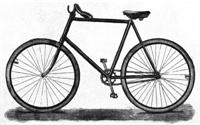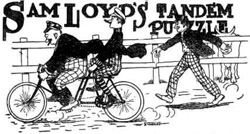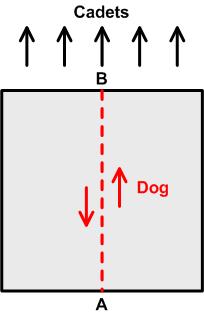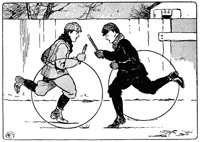 A fun, relatively new, Sherlock Holmes puzzle book by Dr. Watson (aka Tim Dedopulos) has puzzles couched in terms of the Holmes-Watson banter. The following problem is a variation on the Sam Loyd Tandem Bicycle Puzzle.
A fun, relatively new, Sherlock Holmes puzzle book by Dr. Watson (aka Tim Dedopulos) has puzzles couched in terms of the Holmes-Watson banter. The following problem is a variation on the Sam Loyd Tandem Bicycle Puzzle.
“ ‘Here’s something mostly unrelated for you to chew over, my dear Watson. Say you and I have a single bicycle between us, and no other transport options save walking. We want to get the both of us to a location eighteen miles distant as swiftly as possible. If my walking speed is five miles per hour compared to your four, but for some reason—perhaps a bad ligament—my cycling speed is eight miles per hour compared to your ten. How would you get us simultaneously to our destination with maximum rapidity?’
‘A cab,’ I suggested.
‘Without cheating,’ Holmes replied, and went back to tossing his toast in the air.”
See the Bicycle Problem for solutions.

 The following problem from Five Hundred Mathematical Challenges was a challenge indeed, even though it appeared to be a standard travel puzzle.
The following problem from Five Hundred Mathematical Challenges was a challenge indeed, even though it appeared to be a standard travel puzzle. This is another intriguing problem from Presh Talwalkar.
This is another intriguing problem from Presh Talwalkar. A glutton for punishment I considered another Sam Loyd puzzle:
A glutton for punishment I considered another Sam Loyd puzzle: In my search for new problems I came across this one from Martin Gardner:
In my search for new problems I came across this one from Martin Gardner: This turns out to be a fairly challenging driving problem from Longley-Cook.
This turns out to be a fairly challenging driving problem from Longley-Cook. This is another puzzle from the
This is another puzzle from the 